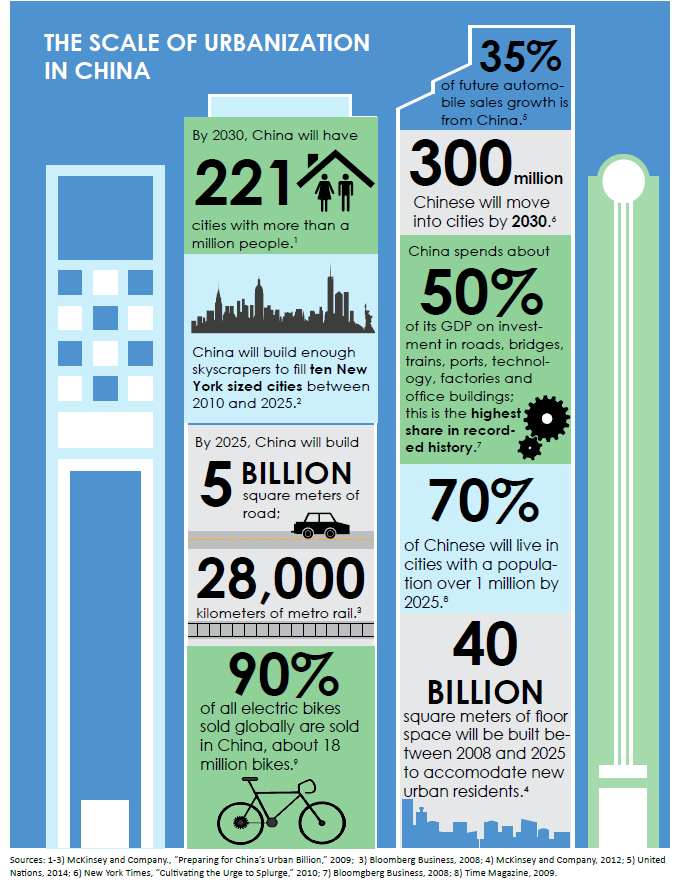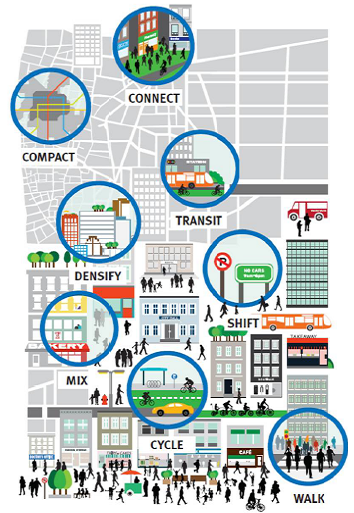With the world’s population rapidly urbanizing, the future of the planet’s climate hinges on the sustainability of its cities.
Will these cities be sprawling and force residents to sit in crippling traffic jams as they choke on polluted air? Or will they offer easy access to goods and services through a variety of transportation options that emit fewer carbon emissions and other air pollutants?
To learn about the ingredients for success, we reviewed the scientific literature on low-carbon cities and sustainable urban development. Our conclusion: compact, walkable, and transit-oriented development creates sustainable, healthy, and economically vibrant cities that deliver a high quality of life to residents.
Cities for People: Insights from the Data synthesizes the quantitative data on urban form and transportation, while also pointing out potential areas for future research. We emphasize studies using real-world evidence, paying particular attention to China, which is urbanizing at a breakneck pace.

Principles of sustainable urban design

The world’s cities are as different as its counties and cultures, but decades of research across the globe have yielded a common set of fundamentals for building sustainable cities.
Known as The 8 Principles, these concepts offer a guide for cities seeking to reduce their carbon footprint, improve residents’ mobility, and foster strong economic growth.
Numerous studies from China and beyond have produced data-backed evidence to support The 8 Principles. An approach that favors sustainable urban form and transportation results in an impressive array of environmental, economic, and social benefits.
Environmental benefits
- Improved air quality: Walking, biking, and public transit can cut transportation emissions, which account for more than 30 percent of the PM 2.5 pollution in Beijing.
- Smaller carbon footprint: Better urban design can reduce carbon pollution from the transportation sector, which accounts for nearly a quarter of the planet’s energy-related greenhouse gas emissions.
- Decreased car dependence: Bike-sharing programs and dedicated lanes provide alternatives to private vehicles. In China, 138 bike-sharing programs had been implemented by the end of 2014, more than any other country.
Economic Benefits
- Lower cost for residents: Households can save money through more energy efficient travel due to mode shifting, easier access to goods in mixed-use developments, and lower parking costs.
- Reduced congestion costs: Employing The 8 Principles can deliver mobility with density and reduce the economic waste associated with traffic, which amounts to 8 percent of metropolitan GDP in Rio de Janeiro and São Paulo.
- Higher property values: Studies from around the globe show that walkability and accessibility to transit increase real estate values.
- Improved productivity: Density boosts productivity and innovation through network effects; by contrast, congestion and pollution harm economic activity and human health.
- Higher government revenues: By choosing smart development strategies, governments can cut capital, labor, and maintenance costs. Globally, $3 trillion in capital investment in urban infrastructure can be saved in the next 15 years by pursuing more compact strategies in line with The 8 Principles.
Social benefits
- Improved public health: Mixed-use, transit-oriented development increases physical activity, whereas failure to mix land-uses and increased car ownership are associated with higher risks of obesity and colon cancer. Sustainably designed communities also offer safer streets and reduce traffic-related injuries.
- Greater human mobility: Greater mobility saves time wasted in traffic jams and expands economic and lifestyle choices for urban dwellers.
- Increased equality of access: In a car-centric framework, low-income residents are often left out of the planning calculus. By building better public transit, sidewalks, and biking paths, those who cannot afford to drive gain greater access access to the city.
Other resources
Our recent publication, Cities for People in Practice, provides case studies on three cities in China, Germany, and Sweden that are models of urban sustainability.
We hope our work is a valuable resource for others advancing urban sustainability. We’ve captured a broad array of studies, but we’re sure that additional work still exists, so we invite readers to contact us at [urban at energyinnovation.org] with suggestions about other relevant research.
